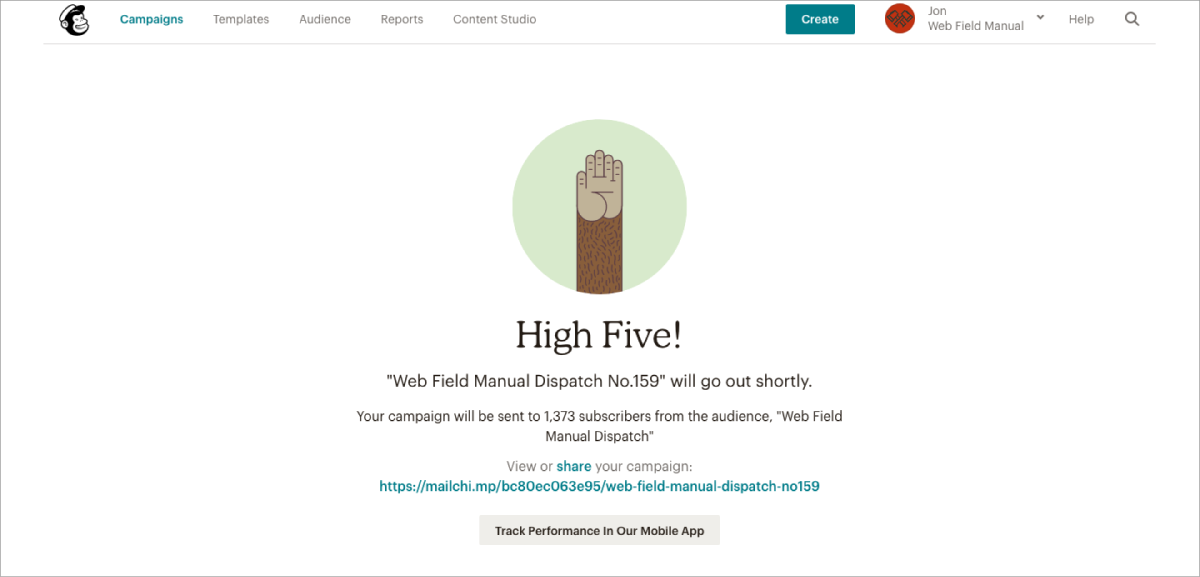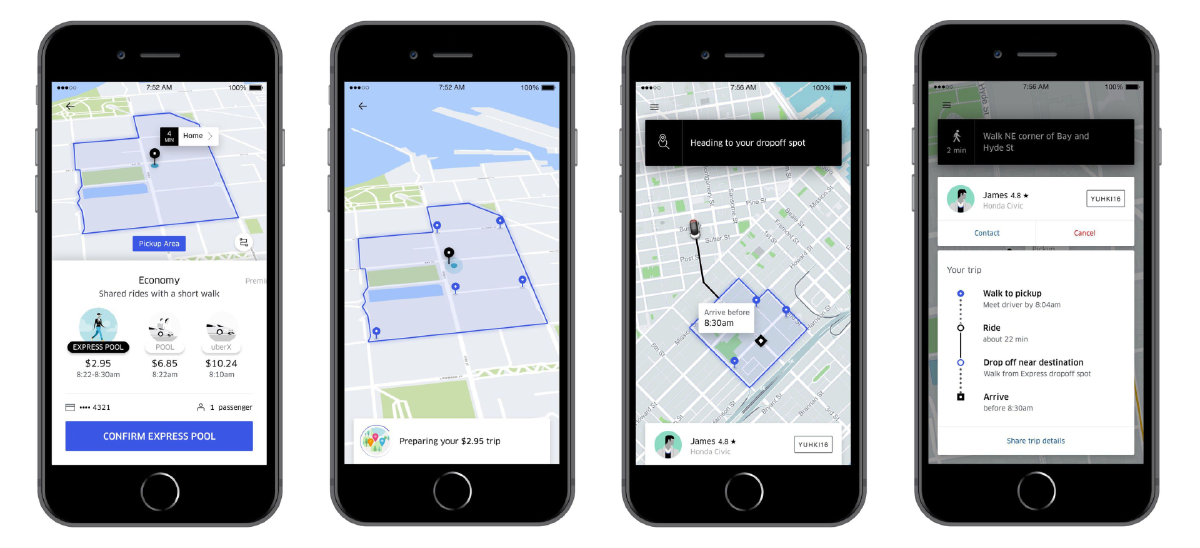The Peak-End Rule is a psychology concept closely related to Cognitive Bias.
Takeaways
- Pay close attention to the most intense points and the final moments (the “end”) of the user journey.
- Identify the moments when your product is most helpful, valuable, or entertaining and design to delight the end user.
- Remember that people recall negative experiences more vividly than positive ones.
Examples

Mailchimp
Mailchimp understands this is an important moment, especially for first-time users, so it goes beyond presenting a simple confirmation modal. By infusing a touch of brand character through illustration, subtle animation, and humor, the tool defuses what could potentially be a stressful moment.

Uber
Negative events also provide emotional peaks and can contribute to a user’s lasting impression of an experience. By focusing on people’s perceptions of time and waiting, Uber was able to reduce its post-request cancellation rate and avoid what could easily become a negative emotional peak while using their service.
Origins
A 1993 study titled “When More Pain Is Preferred to Less: Adding a Better End” by Kahneman, Fredrickson, Charles Schreiber, and Donald Redelmeier provided groundbreaking evidence for the peak–end rule. Participants were subjected to two different versions of a single unpleasant experience. The first trial had subjects submerge a hand in 14°C water for 60 seconds. The second trial had subjects submerge the other hand in 14°C water for 60 seconds, but then keep their hand submerged for an additional 30 seconds, during which the temperature was raised to 15 °C. Subjects were then offered the option of which trial to repeat. Against the law of temporal monotonicity, subjects were more willing to repeat the second trial, despite a prolonged exposure to uncomfortable temperatures. Kahneman et al. concluded that “subjects chose the long trial simply because they liked the memory of it better than the alternative (or disliked it less)”.